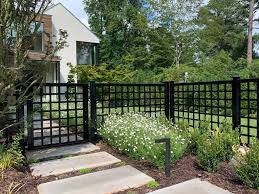
Cultural Kaleidoscope: Diversity Fence Art
Powerful fences (ploty) jobs that reinforce ecological reliability demand not only specialized skills and material resources—they warrant significant local community proposal and stakeholder collaboration. By involving local areas, indigenous groups, landowners, and pertinent businesses in the outset, fencing projects can leverage community expertise, foster acquisition, and ensure the long-term good results and sustainability from the venture.
Neighborhood engagement functions as a foundation for creating trust, cultivating social cohesion, and addressing concerns and goals of varied stakeholders. Through participatory strategies such as group gatherings, training courses, or concentrate groupings, undertaking planners can accumulate important observations, determine prospective challenges, and co-generate remedies that align with all the needs and principles of the neighborhood. Additionally, stimulating community residents as companions in keeping track of and maintenance activities improves the project’s resilience and fosters a feeling of stewardship on the fenced regions.
Moreover, stakeholder cooperation is important for navigating sophisticated regulatory frameworks, getting funding resources, and coordinating multi-sectoral attempts. By creating relationships with government departments, conservation companies, school institutions, and exclusive enterprises, fencing jobs can leverage supporting knowledge, accessibility further resources, and maximize the project’s affect. Collaborative governance buildings, like multiple-stakeholder programs or advisory committees, aid information and facts sharing, consensus-constructing, and adaptive control, thereby enhancing the project’s effectiveness and sustainability.
To summarize, community proposal and stakeholder alliance are important pillars of successful fencing jobs that reinforce ecological sincerity. By adopting participatory methods and cultivating inclusive partnerships, task planners can utilize the combined wisdom and solutions of varied stakeholders, making sure fencing projects not only fulfill technical targets but in addition give rise to interpersonal home equity, environmental justice, and neighborhood durability. When we aim to tackle pressing enviromentally friendly problems, making an investment in purposeful engagement and cooperation is going to be required for producing long lasting options that gain both men and women and earth.